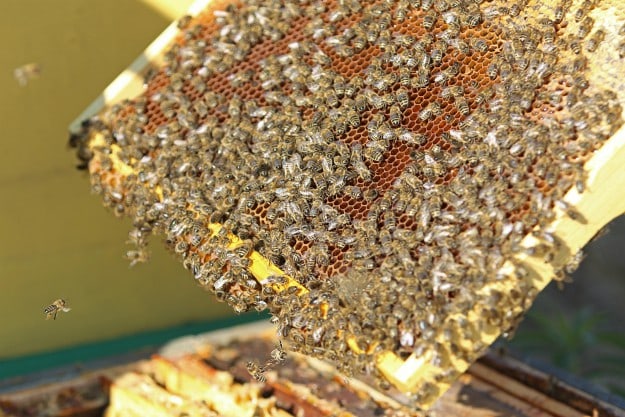Did you know that honey bees don't have origins in the United States? Instead, they're native to places like Italy, Southeast Asia, Malaysia, Indonesia, and several other tropical and subtropical climate regions. Despite this, it's definitely possible to make your honey bees feel right at home here in the States. Learning about different bee housing now means you can have happy hives later.
Honey Bees and Their Homes: Which is Right For You?
There are different species of bees that thrive in different climates; some of them don’t mind the colder weather, while others prefer warmer tropical climates. The Apis andreniformis, also known as the black dwarf honey bee, is relatively rare and can be found in tropical and subtropical regions of Southeast Asia. Whereas the Apis florea which has a much wider distribution of bees in the same area.
But enough about the bee’s history and homeland! Let’s move on to the different types of hives that are available. You wouldn’t think that a difference in hive could create an impact on the progress of honey making, but it does. That's why it's important to understand which type will work best for your honey bees.
Top-Bar Hives
Top-bar hives are horizontal in shape and sit high above the ground on wooden legs. This design has been used for many centuries, but back in the late 60’s and early 70’s it was slightly refined and redesigned for better access. One of the benefits of using the top-bar hives is that since it's raised off of the ground, it's more difficult for pesky predators to disturb or destroy your honey hives and bee babies.
Top-bar hives appear to mimic a hollow stump or tree, giving a bit more of a natural feel or setting for the bees. They’re easier to work with, because the honeycombs within the hives are more accessible. This, in turn, causes less disruption for the bees. Top-bars usually have a window or space for a window to be installed. That way, you can sneak a peek at the busy bees without bothering them. The windows also allow some sunlight in for warmth.
Top-bar bee hives don’t fare well in places that experience harsh winters, so they’re ideal for places with warmer climates. The design is very nice, but they really require an extra watchful eye when the bees are initially introduced. At this stage, you need to be checking to be sure they follow the lines along the top-bar.
Langstroth Hives

The Langstroth hives are a simple design of hive boxes that can be stacked on top of one another in order to expand the hives as the colony grows. These boxes generally contain pre-built frames that have a wax foundation for the bees to build and extend their combs from. The frames are removable, making them a little easier to work with come honey harvest time.
Beekeepers seem to find this style of hive very easy to work with. They also feel as though the bees can actually produce more honey in the Langstroth than they do in most other hives. Although it’s easier for the beekeepers to work with this specific hives, it's not easier for the bees. The fact that the frames are pre-built with the wax foundation makes it a top choice for the keeper of bees, but for the colony this causes health issues due to the predetermined cell size.
Warre Hives

This is one of my favorite hives so far. The Warre hive is designed with more of a natural habitat in mind for the bees. The design is very similar to the Langstroth, but the roof is slanted, and its interior is set up much differently. The hive boxes can be built from the bottom up, so as your colony continues to grow bigger, the hive houses can too.
Unlike some other designs, the Warre hives do not require a lot of monitoring. It has bars across the top similar to those of the top-bar hive, so that the bees can build the comb from the top to the bottom. In this sense, it's also similar to the Langstroth, except there are no pre-built cells. There's also a quilt added into the interior of the roof, which helps insult the hives. This makes it a better choice in colder climates. Also similar to the top-bar hive, there's a space for a window to be installed in the lower section of the hive. Though this hive makes things a little harder for the keeper, it makes it much easier for the honey bees. In my opinion, it’s worth it!
Dr. Tarrin P. Lupo shows a video on beekeeping for beginners and beekeeping basics:
These three hives are a few of the more well-known and most used beehives used when beekeeping. There are all sorts of beehive designs and styles available for purchase. There's also always the DIY route, which can be very educational and fulfilling IF it’s done right. I hope you enjoyed this article on the three basic honey hives. Happy Beekeeping!
Do you plan on raising your own bees at home or already have them? Let us know your beekeeping secrets in the comments below!
Here's a beginner's guide to keeping bees if you want to start one!


Leave a Reply